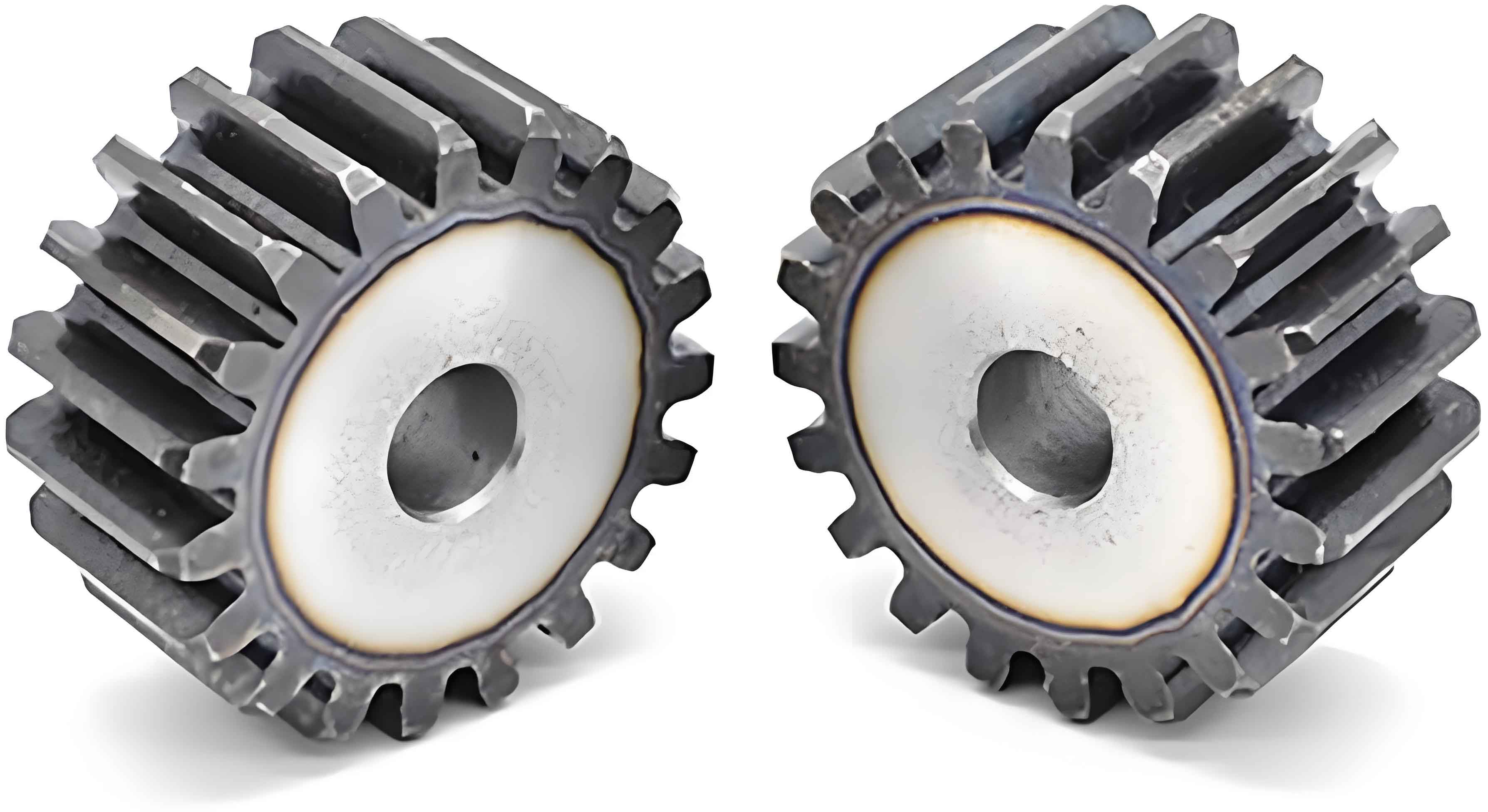Abstract
The friction characteristics and transmission efficiency of cylindrical gears with variable hyperbolic circular-arc-tooth-trace (VH-CATT) operating under mixed lubrication conditions. By employing load-sharing theory, the friction coefficient formula for VH-CATT cylindrical gears was derived. Furthermore, a transmission efficiency calculation model was established. The influence of surface morphology parameters, lubricant parameters, and normal load on the friction coefficient, friction performance, and transmission efficiency of VH-CATT cylindrical gears under mixed lubrication was investigated through Stribeck curves.
Keywords: cylindrical gear; mixed lubrication; friction coefficient; Stribeck curve; transmission efficiency

1. Introduction
Cylindrical gears, especially VH-CATT cylindrical gears, exhibit excellent meshing performance, high contact ratio, no axial force, strong carrying capacity, high transmission efficiency, and smooth transmission. These characteristics make them promising in aerospace, transportation, and other mechanical equipment transmission systems. However, friction and wear in gears can significantly affect their performance and lifespan. Therefore, an accurate understanding of their friction characteristics and transmission efficiency is crucial.
2. VH-CATT Cylindrical Gear Contact Analysis
The tooth surface contact analysis (TCA) method was employed to obtain parameters such as curvature, speed, and load at the meshing points of VH-CATT cylindrical gears. Table 1 summarizes the key parameters considered in the contact analysis.
| Parameters | Description |
|---|---|
| Curvature | Curvature of the tooth surface at the meshing point |
| Speed | Relative speed between the mating teeth |
| Load | Normal load applied to the mating teeth |
3. Friction Coefficient Calculation Model
The friction coefficient of VH-CATT cylindrical gears under mixed lubrication was derived using the load-sharing theory, considering parameters such as surface roughness, lubricant properties, and contact geometry. The friction coefficient (μ) can be expressed as a function of these parameters:
μ=f(curvature, speed, load, surface roughness, lubricant properties)μ = f(\text{curvature}, \text{speed}, \text{load}, \text{surface roughness}, \text{lubricant properties})μ=f(curvature,speed,load,surface roughness,lubricant properties)
4. Transmission Efficiency Calculation Model
The transmission efficiency (η) of VH-CATT cylindrical gears at a meshing position i can be calculated using the following formula:
η(φi)=1−Pf(φi)Pin\eta(\varphi_i) = 1 – \frac{P_f(\varphi_i)}{P_{in}}η(φi)=1−PinPf(φi)
where PinP_{in}Pin is the input power of the gear.
5. Influence of Various Parameters
5.1 Surface Morphology Parameters
Changes in surface morphology parameters lead to an expansion of the mixed lubrication zone, increasing the friction coefficient at equivalent velocities. Table 2 summarizes the impact of surface roughness parameters.
| Parameter | Effect on Friction Coefficient |
|---|---|
| Roughness | Increase in friction coefficient |
5.2 Lubricant Parameters
An increase in lubricating oil viscosity escalates the friction coefficient, causing the Stribeck curve to shift leftward and the mixed lubrication zone to expand towards the boundary lubrication zone. Table 3 outlines the impact of lubricant properties.
| Parameter | Effect on Friction Coefficient | Effect on Stribeck Curve |
|---|---|---|
| Viscosity | Increase | Shift leftward; Mixed zone expands |
5.3 Normal Load
The influence of load on the Stribeck curve is most significant during the transition between the mixed and boundary lubrication zones. Table 4 summarizes the effect of normal load.
| Parameter | Effect on Transition Phase |
|---|---|
| Load | Significant impact |
6. Experimental Validation
Experimental data was obtained using a gear transmission tester. The measured transmission efficiency was compared with the theoretical results. The theoretical calculations showed good consistency with the experimental data, although the measured values were slightly lower due to additional power losses in bearings and housings.
7. Conclusion
This paper presents a comprehensive analysis of the friction characteristics and transmission efficiency of VH-CATT cylindrical gears under mixed lubrication. The following key conclusions were drawn:
- The friction coefficient exhibits a trend of decreasing first and then increasing, with a minimum near the pitch point and mutations at the single-double tooth交替 points.
- As speed increases, the friction coefficient decreases, while an increase in lubricant viscosity leads to an increase in the friction coefficient.
- Load significantly affects the friction coefficient near the pitch point.
- Surface roughness and lubricant viscosity have a notable impact on transmission efficiency, particularly at lower speeds.
By optimizing these parameters, the performance of VH-CATT cylindrical gears can be significantly enhanced, leading to improved efficiency and longer lifespan.
